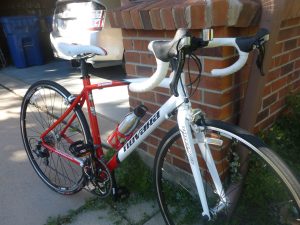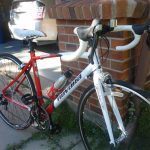 A ride on my shiny new bicycle provides a mid-afternoon break from writing, as I navigate my way through side streets and open-space trails on a warm fall afternoon. The short respite shakes the cobwebs from my mind, and I return to the task of navigating through the tangle of research studies that inform my writing.
A ride on my shiny new bicycle provides a mid-afternoon break from writing, as I navigate my way through side streets and open-space trails on a warm fall afternoon. The short respite shakes the cobwebs from my mind, and I return to the task of navigating through the tangle of research studies that inform my writing.
Besides enjoying any activity that involves navigating through the environment (bicycling, skiing, dancing), “navigation” is on my list of favorites words because it exemplifies the interconnection of mind and movement. Navigation all at once includes perception, decision-making, and action.
I’ve learned that scientists are making progress toward understanding how the brain handles the complex task of navigating through space. What’s fascinating is that neural activity underlying how we find our way through the environment relies upon the same brain regions that support memory and planning. That includes the hippocampus and closely related entorhinal cortex, which create maps that help us figure out where we are in relationship to landmarks, and track the movement of the body through the environment in a kind of neural “dead-reckoning.”
In a research review published in Nature Neuroscience, scientists György Buzsáki from the NYU Neuroscience Center Institute and Edvard Moser from the Kavli Institute for Systems Neuroscience in Norway proposed that the neural mechanisms underlying memory and planning evolved from the brain’s ability to navigate in the physical world. To quote the scientists, “the neural algorithms underlying navigation in real and mental space are fundamentally the same.”
That may explain why Alzheimer’s patients literally lose their way getting around in the world in addition to losing their memory. And it helps make scientific sense of anecdotal accounts and a growing number of studies that claim movement activities such as dance and bike riding improve cognitive function.
Whether navigating the dance floor or the bike path (or the hiking trail, ski slope, aikido mat, et al.), we engage our whole being in a coordinated response – from multiple senses to complex problem solving to the whole body in motion. And that’s good for our overall well-being.
